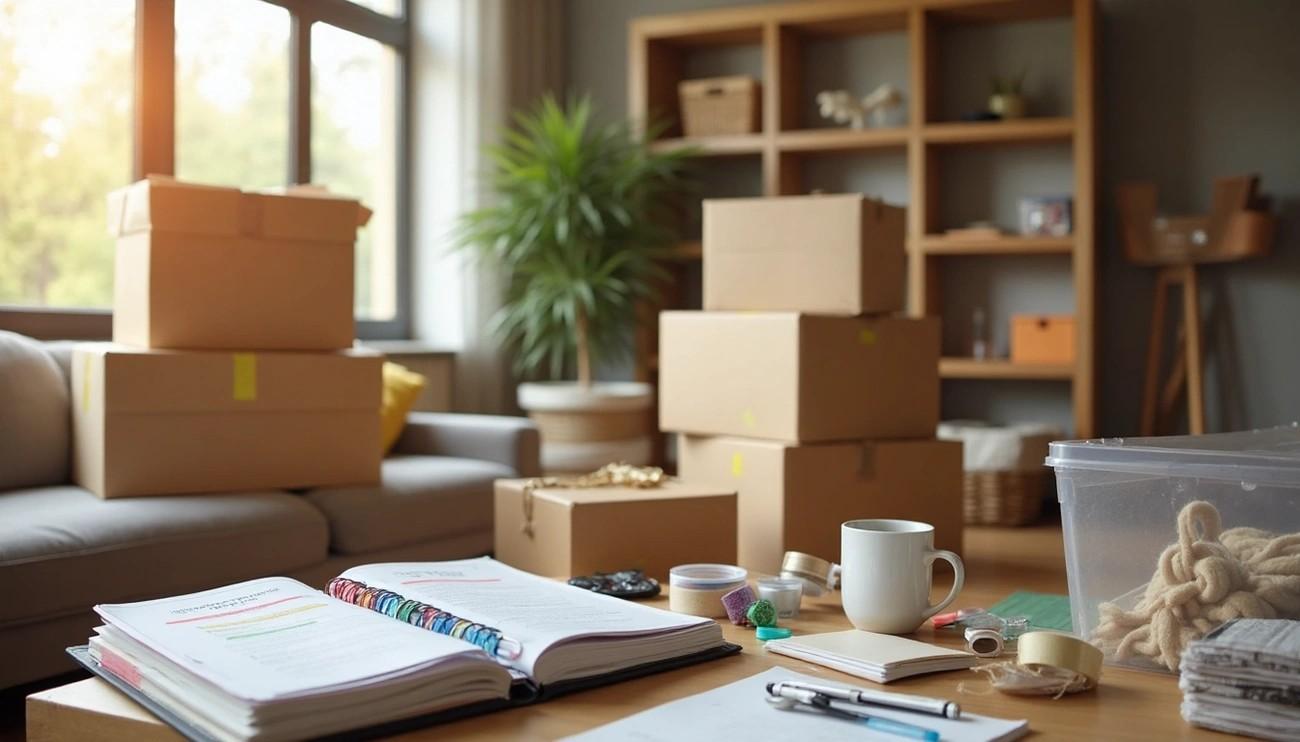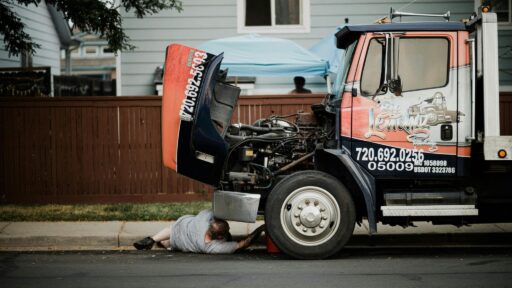Americans move often, with millions relocating each year. The process of packing up an entire household while trying to stay organized can feel overwhelming for just about anyone.
From my own experience, I’ve learned that staying organized makes all the difference. A detailed moving checklist is a great place to start, but the real key is beginning early. As moving day approaches, things only get more hectic, so giving yourself plenty of lead time is essential.
During my last move, I packed around 75 boxes and discovered something simple but important: labeling and indexing even 85 percent of your boxes is far better than not labeling at all. Taking a little extra time to declutter as you pack also pays off when it’s time to unpack and settle in.
In this guide, I’ll walk you through practical, stress-reducing strategies—from building your moving toolkit to organizing everything efficiently—so you can make your next move as smooth as possible.
Build Your Moving Toolkit
Your moving success starts with the right tools. A well-prepared moving toolkit helps you take control of the chaos that comes with relocating.
Create a moving binder
Your moving binder will be your command center as you relocate. This organizational powerhouse puts everything from timelines to important documents in one available place.
Add divider tabs to separate these sections:
- Master to-do lists and timelines
- Important documents and contracts
- Box inventory sheets
- Contact information
- Expense trackers
- New location information
Your binder needs plastic sleeves to protect important papers and a zipper pouch to store small items like extra keys and business cards. The binder’s true value comes when you update it as your move progresses.
Assemble a packing kit
After setting up your binder, gather your packing supplies. This prevents those frustrating trips to the store mid-packing:
- Quality packing tape and dispenser
- Permanent markers for labeling
- Moving boxes in various sizes
- Protective materials (bubble wrap, packing paper)
- Scissors and box cutters
- Heavy-duty trash bags for clothing, linens, and pillows
Store these supplies in a dedicated bag or container you can carry from room to room. Your home’s size determines how many supplies you’ll need—bigger homes need more materials.
Use a checklist for moving
A complete moving checklist breaks down this overwhelming process into doable steps. Your timeline should start 8 weeks before moving day, with these phases:
- 8 weeks: Start decluttering and researching movers
- 6 weeks: Book moving services and start collecting supplies
- 4 weeks: Begin packing non-essentials
- 2 weeks: Confirm details and continue packing
- 1 week: Pack “open first” boxes with essentials
- Moving day: Final walkthrough and coordination
Starting early with your checklist makes your move less stressful. On top of that, it helps to snap photos of valuable items and electronics before taking them apart—you’ll thank yourself when setting up your new home.
According to a recent survey conducted by ZipMoving, many people feel the most overwhelmed not on moving day itself, but in the weeks leading up to it due to poor planning. A well-structured checklist helps take the pressure off and gives you a clear path to follow.
Start Packing with a Plan
Smart packing makes a huge difference in your moving preparation. A methodical approach will save you time, money, and stress instead of stuffing items into boxes at the last minute.
Begin with non-essential items
You should start packing the moment you know about your move. The ideal time to begin is 4-6 weeks before moving day. This helps you avoid feeling rushed. Your attics, basements, and storage spaces are good starting points, followed by seasonal items. Pack your off-season clothing, holiday decorations, and items you rarely use. These “nice-to-haves” won’t affect your daily routine but give you a head start.
Declutter as you go
Moving gives you the perfect chance to lighten your load. Take a hard look at what deserves space in your new home. The “one-year rule” helps with tough decisions – if you haven’t touched something in the last year, it’s probably ready to donate or sell. This not only cuts moving costs but gives you a fresh start. Put a donation box in each room and add items you find during your daily activities to optimize efficiency.
Use what you have for padding
You can skip expensive bubble wrap and use items you already own as protection. Your clothes, towels, and linens work great to wrap fragile items – this protects breakables while packing soft items. Rolled socks fit nicely in hollow spaces in pots. T-shirts work well between plates, and shoes fill gaps in boxes.
More than that, your magazines, newspapers, and junk mail become excellent void fillers and cushioning materials. This saves money and creates less waste.
Label boxes clearly and consistently
Good labeling turns unpacking from chaos into a smooth process. Each box needs three key details: destination room, contents list, and handling instructions if needed. To name just one example, write “Kitchen – Pots and Pans” instead of just “Kitchen.”
Put labels on two sides and the top of each box so you can see them whatever the stacking arrangement. A numbering system with a master inventory list helps track every item, especially in bigger moves.
Organize for Efficiency
Good organization turns your moving experience from overwhelming to orderly. Smart systems will save you time and reduce stress throughout the whole process.
Color-code by room
Color-coding makes the move-in process quick and easy. Bright visual markers help movers identify where each box belongs, unlike small, hard-to-read labels. Each room in your new home needs a unique color—blue could work for the kitchen and red for the bathroom.
Make a color key and place copies near entrances and hallways so everyone knows your system. Your team won’t need constant direction, and any communication barriers with moving crews won’t be an issue.
Here’s how to set up this system:
- Buy colored tape or stickers in distinct shades
- Label boxes after packing based on their destination
- Create matching room signs to put on doors at your new home
- Keep colors consistent as you pack
Create a box index
A complete box inventory saves you from wondering “which box has the coffee maker?” Number each box in order, no matter which room it’s going to, and create a master list of everything inside each container. You’ll find specific items quickly without opening dozens of boxes. The list also lets you check off boxes during loading and unloading to make sure nothing gets lost.
Pack ‘open me first’ boxes
Your first-night essentials need special attention. Pack 2-3 boxes clearly marked “open me first” with immediate necessities like toiletries, medications, shower curtains, bedding, basic kitchen supplies, and cleaning products. These boxes should be easy to spot—use bright colors or clear labels on all sides. Keep these containers in your personal vehicle instead of the moving truck if possible, and you’ll have everything you need right away.
Use bins, baskets, and tubs smartly
Plastic bins work better than cardboard boxes—they’re sturdy, stackable, water-resistant, and reusable. Your decorative baskets can carry items like books or shoes that might be too heavy for regular boxes. Clear containers are great for essentials because you can see what’s inside.
Prepare for the Unexpected
Moving brings unexpected challenges, no matter how well you plan ahead. Being ready for surprises can turn a potentially stressful experience into something more manageable, even when your organizational skills are top-notch.
Leave out essentials until the end
A dedicated essentials bag works best – just like packing for a weekend trip. This bag should have items you’ll need right after arrival:
- Medications and first aid supplies
- Important documents (passports, birth certificates)
- Personal hygiene items and toilet paper
- Phone chargers and electronic necessities
- Simple kitchen supplies (coffee, anyone?)
- Change of clothes for 1-2 days
Keep these items with you instead of loading them on the moving truck. This way, you won’t spend hours searching through countless boxes for your toothbrush after an exhausting day.
Plan for kids and pets
Kids and pets feel extra stressed during moves because they don’t quite grasp what’s happening. Try to arrange a babysitter on moving day to keep children occupied somewhere else. Your pets will do better at a boarding facility or with a friend to prevent anxiety and escape attempts.
Pack a separate essentials bag for children and pets that has:
- Favorite toys or comfort items
- Special foods and snacks
- Regular medications
- Pet food, dishes, and litter boxes
Expect last-minute chaos and stay flexible
Nearly 30% of moves face unexpected scheduling issues due to weather changes or logistical problems. A flexible mindset helps when things drift away from your carefully crafted plans. A recent post by Zip Moving and Storage highlights how common these disruptions are, especially in larger metro areas where traffic, building regulations, or elevator access can suddenly complicate the timeline.
Having backup plans ready makes sense — whether you need alternative transportation, extra childcare, or more time in your schedule. Quick problem-solving becomes easier when you keep emergency contacts handy, from movers to handymen and supportive friends.
Staying calm during sudden changes is vital. These challenges won’t last forever, even if they feel overwhelming right now. Take deep breaths and focus on solutions to guide yourself through the surprises that come with every move.
Conclusion
No matter how many times you’ve moved before, every relocation comes with its own set of challenges. But with the right mindset, solid planning, and a few smart strategies, you can turn what often feels like chaos into a smooth, manageable experience.
Remember, the goal isn’t perfection—it’s progress. Give yourself plenty of time, stay organized, and don’t hesitate to lean on tools, tips, or professional help when needed. Whether you’re downsizing, upgrading, or just relocating to a new neighborhood, a thoughtful approach will make all the difference.
You’ve got this. And soon enough, your new home will be more than just a space—it’ll be a place you’ve set up with care, ready for whatever comes next.








